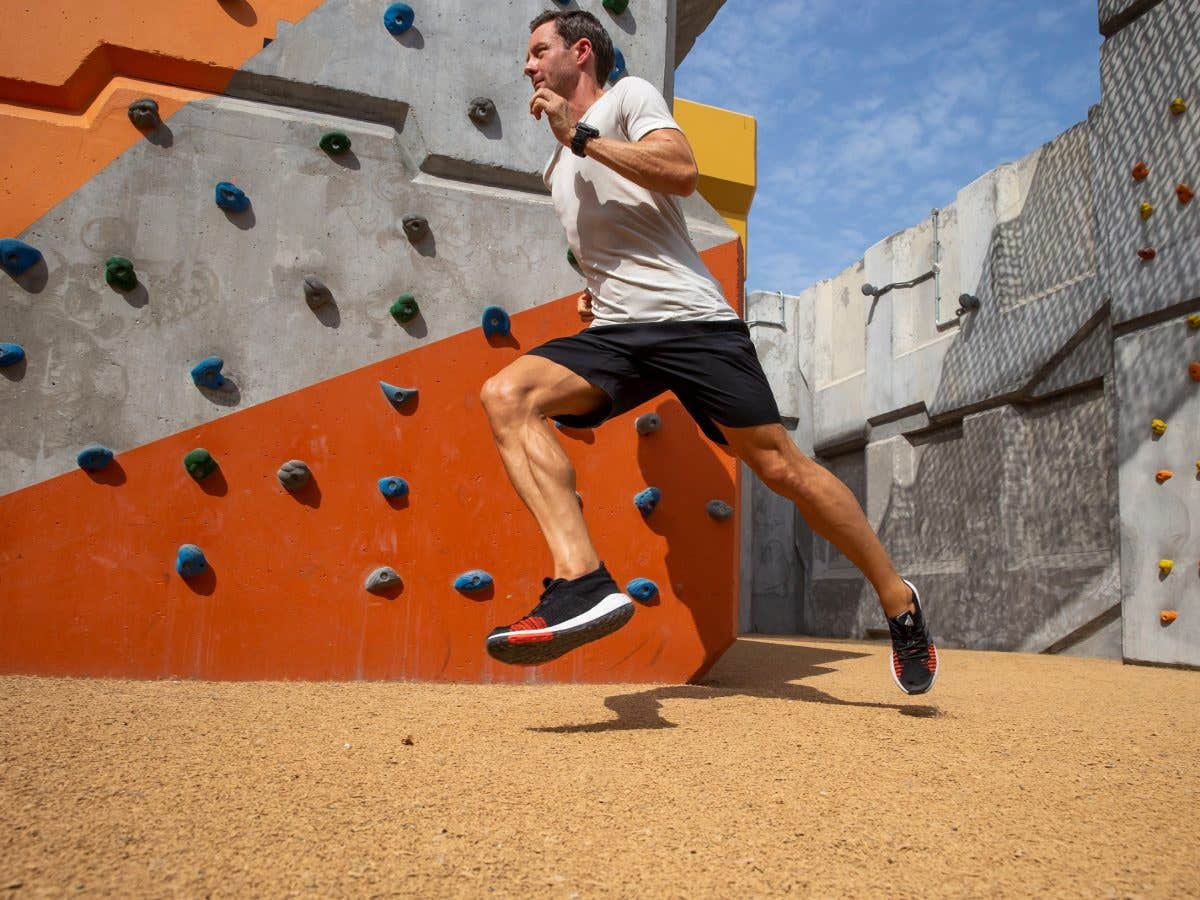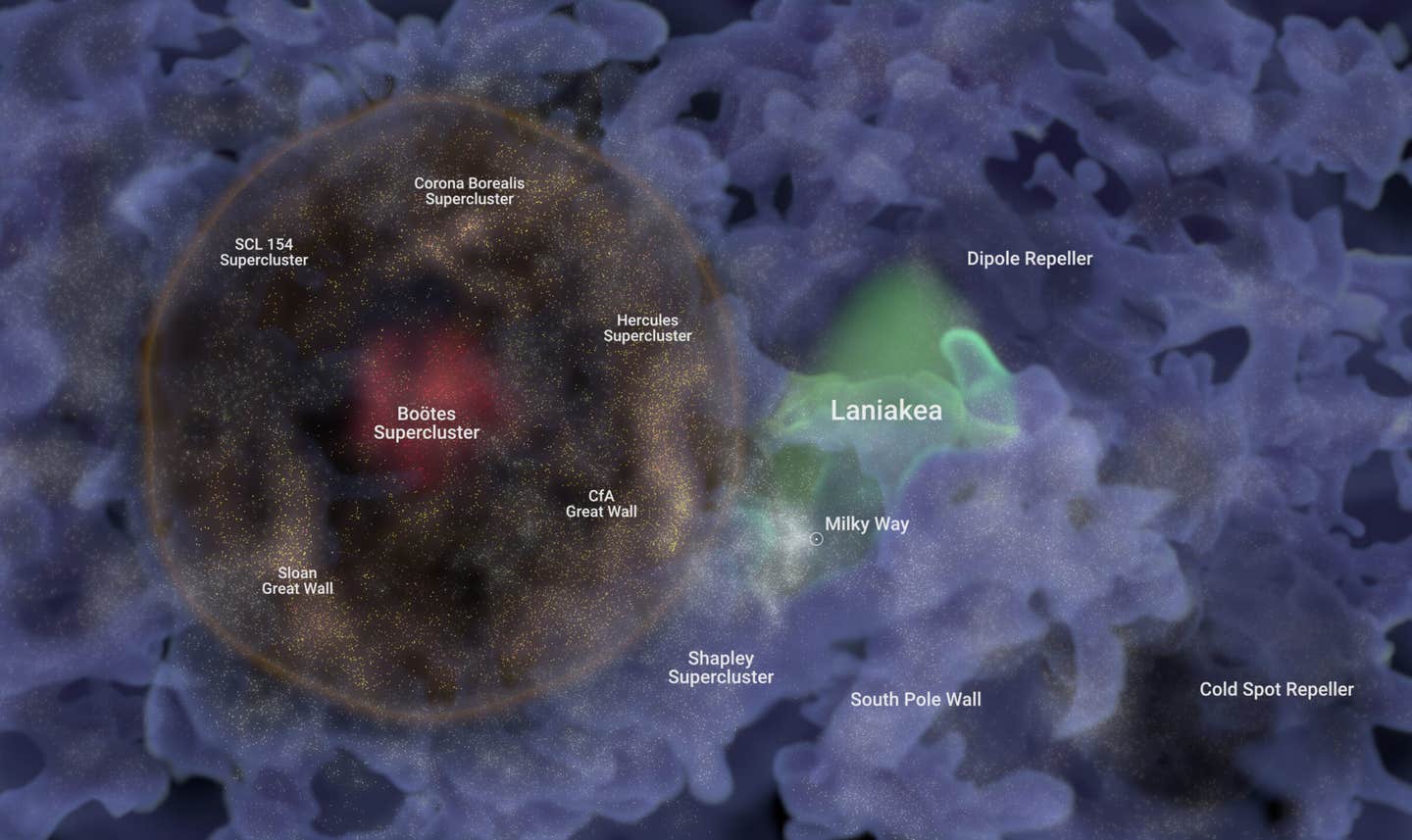Do you have a bounce in your step? You must be an elite runner
A recent study compared the bouncing behavior in elite-level male runnersto highly trained but not elite runners.

[July 20, 2021: University of Michigan]
A recent study led by Geoff Burns, an elite runner and postdoctoral researcher at the University of Michigan Exercise & Sport Science Initiative, compared the "bouncing behavior"--the underlying spring-like physics of running--in elite-level male runners (sub-four-minute milers) vs. highly trained but not elite runners.
Subjects ran on a treadmill instrumented with a pressure plate beneath the belt, so Burns and colleagues could see how much time they spent in the air and in contact with the ground. When running, muscles and limbs coordinate to act like a giant pogo stick, and those muscles, tendons and ligaments interact to recycle energy from step to step, Burns says.
The researchers looked at the basic physics of the runners as pogo sticks--called a "spring-mass" system in biomechanics--to see how those giant springs differed between elite and highly trained runners, and found some interesting and surprising differences.
What did we find?
We often think of running as pushing off the ground, but it's actually a beautifully coordinated bounce. All animals that run behave like this--even the ones with multiple pairs of legs coordinating to "bounce" along the ground.
In general, the elite runners were "stiffer" spring-mass systems with steeper impact angles--think of stiffer, more upright pogo sticks. Across various speeds, the elites had similar stride lengths and stride frequencies (similar cadences, or steps-per-minute) as highly trained runners, but elites spent more time in the air and less on the ground, especially at the lower speeds. With their "stiffer" spring behavior on each step, they may be better recycling that gravitational energy from the time in the air to quickly and efficiently bounce along, step-to-step.
One of the key findings was that difference in speeds. Across all speeds, the elite runners were in the air longer, but both time on the ground and in the air changed differently across speeds in the two groups. In both measures, the highly trained group approached the elites at faster speeds, but at lower speeds--where both groups spend the bulk of training time--the times were very divergent, with the elites more similar to their patterns at faster speeds.
Is there a practical application for runners here? Can this be taught?
We believe that aspects are--to some extent--trainable. Things like resistance training for the lower limbs are known to increase leg stiffness, and even incorporating plyometric drills can help with this. Even something as simple as running on different surfaces (pavement vs. grass vs. dirt) will force you to change your body's bouncing stiffness. Simply put, challenging your body to interact with the ground differently will likely promote some sort of beneficial adaptation, if dosed responsibly.
We would certainly caution runners from trying to change this consciously. By this we mean, don't go out for a run and think, "I'm going to run with a stiffer leg or body" or "I'm going to try and spend as little time on the ground and as much time in the air as possible for this whole run." Broadly speaking, when we run, our bodies choose the movement patterns that tend to be most efficient and safest for us at that time. Moreover, because these are "system" characteristics, trying to exert conscious control over a continuously changing coordination of components is a recipe for trouble.
Putting those two things together, we'd say runners shouldn't try to consciously change their system or emulate the elite characteristics, but rather incorporate elements in their training that demand their system to take on those characteristics. What are those things? We can look right at the common ingredients of the middle distance runners' training menu: hills, sprints and fast intervals, plyometric drills, and lots of easy, slower running. These are things that are easy to incorporate into training that will challenge the whole "system" of a runner--be it the musculoskeletal strength, those neuromuscular coordination patterns, or tendinous structures--all to interact with the ground more efficiently across a range of speeds. While most of both the trained and elite runners in our study used these ingredients to some extent, we would add that the elites were certainly more regimented in them, and most incorporated resistance training as well.
The different relations with speed between the two groups in the contact time and flight time were interesting and surprising. We expected those variables to be linked to speed in both groups, and maybe some general difference between the two, but the interaction was interesting. Especially in that the elite group was less influenced by speed, meaning those patterns persisted at slower speeds. This could suggest a robustness of the musculoskeletal and physiological patterns that give rise to the overall spring-like characteristics of their stride, or that they're continually training these patterns at lower speeds when they're not incurring the physiological and mechanical stresses of running at faster speeds.
It was also interesting that despite these different patterns in the speed dependency between the two groups, the runners still coordinated their global mechanics to maintain consistent leg stiffness across all speeds. This was expected, as all running animals tend to maintain leg stiffness across speeds (which was cool, nonetheless, to see that play out here in all the runners). But that there were different relationships with the other variables across speeds between the two groups that ultimately produced this consistent bouncing behavior in each group was pretty neat. And that it was consistently higher in the elites was further cool.
It was also interesting that the two groups had similar vertical compressions during stance across speeds, meaning that their bodies moved up and down similar amounts, yet the net result was still higher leg stiffnesses and vertical stiffnesses. This stems from the interaction of the steeper impact angles in the elites and the higher vertical forces. So, they were more upright in their force delivery to the ground, and loaded their bodies slightly more. Ultimately, they moved up and down the same amount, but because the forces were greater and their mechanical system was stiffer, they could recycle more energy through the stance cycle.
We found the impact angle patterns were also interesting. These are essentially a synthesis of the runner's time on the ground, the runner's speed and the body's geometry. That the runners converged on the contact time at faster speeds but diverged on the impact angle (meaning the elites and subelites had more similar contact times at faster speeds, but less similar impact angles) would suggest that the two groups were changing their contact times in relation to their center-of-mass height and leg length differently, with the elites doing so to keep their system more "upright" or vertical at the faster speeds.
Study co-authors include: Richard Gonzalez, U-M professor of psychology, marketing and statistics; Jessica Zendler, a researcher at the Michigan Performance Research Laboratory and principal consultant at Zendler Scientific, a consulting and research services firm for sport and human performance; and Ronald Zernicke, director of U-M's Exercise & Sport Science Initiative and professor of kinesiology, biomedical engineering and orthopaedic surgery.
The study, "Bouncing behaviors of sub-four minute milers," appears in Scientific Reports.
Like these kind of feel good stories? Get the Brighter Side of News' newsletter.
Tags: #New_Discoveries, #Sports, #Research, #Running, #The_Brighter_Side_of_News
Joseph Shavit
Head Science News Writer | Communicating Innovation & Discovery
Based in Los Angeles, Joseph Shavit is an accomplished science journalist, head science news writer and co-founder at The Brighter Side of News, where he translates cutting-edge discoveries into compelling stories for a broad audience. With a strong background spanning science, business, product management, media leadership, and entrepreneurship, Joseph brings a unique perspective to science communication. His expertise allows him to uncover the intersection of technological advancements and market potential, shedding light on how groundbreaking research evolves into transformative products and industries.



